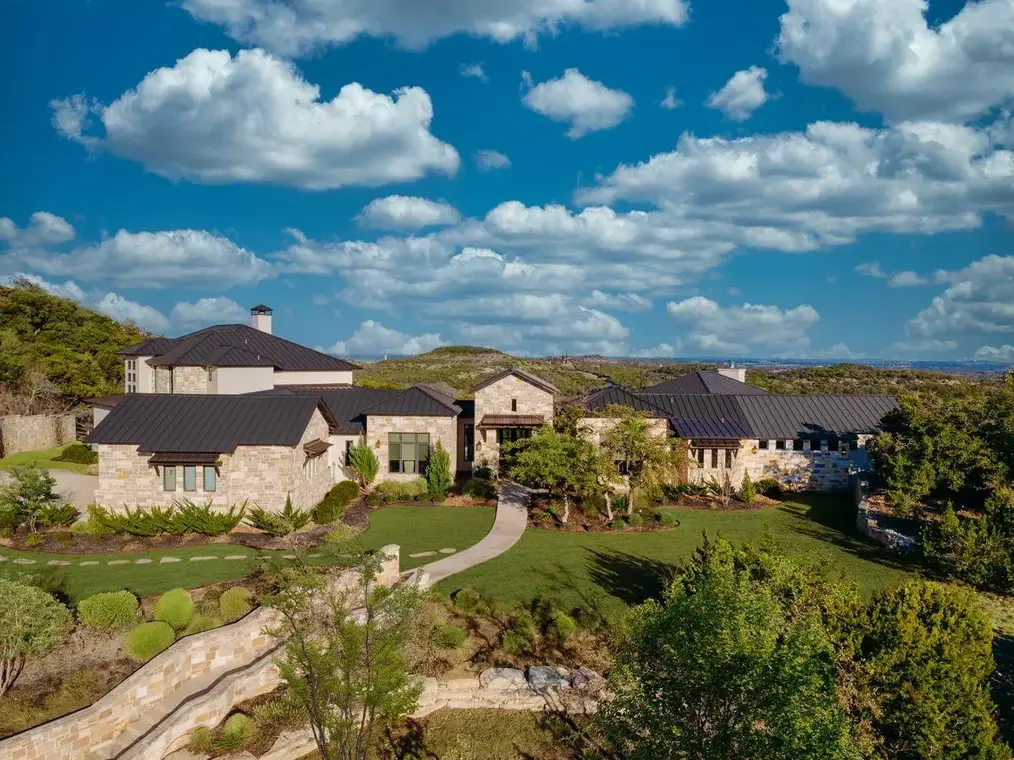Pruning and trimming, often perceived as simple acts of snipping away branches, are multidimensional practices that extend far beyond the shears. As essential components of arboriculture, these techniques, alongside proper fertilization, planting, and tree removal, require a profound understanding of tree physiology, growth patterns, timing, and environmental factors.
In this comprehensive article, we embark on a journey into the intricate world of tree care, exploring the refined facets that contribute to its effectiveness. By delving into the science and art of tree care, we gain insights into how thoughtful and informed practices in pruning, trimming, fertilization, planting, and tree removal can enhance tree health, aesthetics, and overall well-being.
Understanding North Texas Trees, Soil Health, And Tree Deficiencies
In the challenging climate of North Texas, where summers can be scorching and rainfall sporadic, comprehending tree physiology is of utmost importance. At Purple Care, our approach to pruning and trimming is attuned to the specific requirements of trees in this region. Moreover, we prioritize soil amendments to enrich the soil, thereby promoting tree health, vitality, and addressing potential deficiencies. A robust soil foundation not only provides trees with essential nutrients but also offers vital support for robust growth. In our commitment to educating our clients, we emphasize the significance of soil health and how it plays a pivotal role in mitigating tree deficiencies, ensuring their long-term well-being.
North Texas, like many regions, can experience various tree deficiencies depending on factors such as soil conditions, climate, and tree species. Some common tree deficiencies in North Texas may include:
Iron Chlorosis: This deficiency often occurs in trees planted in alkaline soils. It results in yellowing leaves with green veins due to insufficient iron uptake by the tree.
Zinc Deficiency: Trees may show stunted growth and smaller, distorted leaves when lacking zinc, which is essential for several metabolic processes.
Magnesium Deficiency: A shortage of magnesium can lead to interveinal chlorosis, where the tissue between leaf veins turns yellow, but the veins themselves remain green.
Potassium Deficiency: Insufficient potassium may result in poor fruit development, weak branches, and increased susceptibility to diseases.
Nitrogen Deficiency: This deficiency can cause overall poor growth, smaller leaves, and pale green or yellowing foliage.
Phosphorus Deficiency: Trees lacking phosphorus may exhibit slowed growth, dark green or purple foliage, and reduced flowering or fruiting.
Sulfur Deficiency: Yellowing of leaves and poor growth are common symptoms of sulfur deficiency, especially in sandy soils.
It is essential to note that the specific deficiencies can vary based on the tree species and the specific conditions of a particular location within North Texas. A soil test and consultation with our arborist can help identify and address the particular deficiencies affecting trees in our given area.
Purple Care specializes in identifying and correcting tree nutrient deficiencies through tailored soil amendments and fertilization programs. Our expert services ensure that trees receive the vital nutrients they need for robust growth and optimal health.
Adapting To Growth Patterns and Thoughtful Planting
North Texas, like many other regions, has its own unique set of environmental conditions that influence the growth patterns of trees in the area. These conditions play a crucial role in determining the types of trees that thrive there, their growth rates, and overall characteristics.
Here are several key factors that influence tree growth patterns in North Texas:
Climate: North Texas experiences a predominantly hot and humid subtropical climate. Summers are typically hot with high temperatures, while winters are relatively mild. This climate affects the types of trees that can thrive in the region. Trees adapted to this climate tend to have drought-resistant features like deep root systems and small, waxy leaves to reduce water loss through transpiration.
Soil Composition: The soil composition in North Texas can vary, but many areas have clay-rich soils that can affect tree growth. Clay soils have good water retention but can become compacted and restrict root growth. Some tree species have adapted to these soil conditions, while others may struggle to establish themselves.
Water Availability: North Texas experiences periodic droughts, which can have a significant impact on tree growth. Trees that have developed drought tolerance mechanisms, such as storing water in their tissues or having efficient water uptake systems, are more likely to thrive in this region.
Native Species: Native trees are adapted to the local climate and conditions and are more likely to thrive in North Texas. Common native tree species in North Texas include pecan, live oak, cedar elm, and Texas redbud. These trees have evolved to withstand the region's specific challenges.
Urbanization and Development: Urban areas in North Texas can have different growing conditions due to increased impervious surfaces, reduced green spaces, and pollution. Urban trees may face stress from limited root space, compacted soils, and exposure to urban pollutants, impacting their growth patterns.
Invasive Species: The introduction of non-native, invasive tree species can also affect North Texas's tree ecosystems. Invasive species can outcompete native trees for resources and disrupt the natural balance.
Elevation and Topography: North Texas's landscape varies from flat plains to hilly terrain. Elevation and topography can influence the types of trees that grow in different areas. For example, some species are better suited to the well-drained soils of hillsides, while others thrive in low-lying floodplains.
Human Intervention:Land management practices, including deforestation, tree planting initiatives, and landscaping choices, can impact tree growth patterns. Selecting appropriate tree species and implementing proper care and maintenance practices can help mitigate some of the challenges posed by the region's climate and conditions.
North Texas's unique climate, soil, and environmental conditions contribute to distinct tree growth patterns in the region. Native species adapted to these conditions tend to fare better, while urbanization, invasive species, and other human activities can further shape the composition and health of North Texas tree populations. Understanding these factors is crucial for sustainable tree management and conservation efforts in the region.
Our approach to pruning, trimming, and planting aligns with the specific characteristics of these trees. Pruning and trimming are tailored to encourage healthy forms and maintain safety. In planting, we carefully select tree species and planting times that suit the growth patterns prevalent in North Texas, ensuring that the trees thrive and establish well. Simultaneously, our educational efforts include sharing insights about how growth patterns are affected by tree deficiencies and how proper care can mitigate these issues.
Our region is home to a diverse range of tree species, each with its own unique growth patterns and adaptations to the local climate and conditions.
Optimal Tree Planting Options
Pecan (Carya illinoinensis): Pecan trees are well-suited to the region and can grow to impressive sizes. They have a distinctive growth pattern with a tall, straight trunk and a rounded crown. Pecan trees are prized for their delicious nuts.
Cedar Elm (Ulmus crassifolia): Cedar elms are known for their resilience in the face of drought and can thrive in North Texas. They have a vase-shaped growth pattern with serrated leaves.
Live Oak (Quercus virginiana): Live oaks are evergreen trees with a broad, spreading canopy and dense foliage. They are adapted to the region's heat and can provide excellent shade.
Eastern Redbud (Cercis canadensis): These ornamental trees are known for their beautiful pink or purple spring flowers. They typically have a more modest growth pattern compared to larger shade trees.
Texas Red Oak (Quercus buckleyi): This native oak species has a rounded crown and striking red fall foliage. It adapts well to North Texas' climate and soil conditions.
Chinese Pistache (Pistacia chinensis): These trees are known for their vibrant orange and red fall foliage. They have a rounded canopy and can withstand the region's hot, dry summers.
Mexican Sycamore (Platanus mexicana): Mexican sycamores are known for their large, heart-shaped leaves and attractive mottled bark. They have a more moderate growth pattern and are well-suited to North Texas landscapes.
These are just a few options in diverse tree species that prosper in North Texas, each contributing to the region's unique landscape and demonstrating how different trees have adapted to thrive in this specific environment.
Timing, Environmental Considerations, And Responsible Removal
Timely care is crucial in North Texas to minimize stress on trees and maximize their well-being. Our approach to pruning, trimming, and soil amendments is carefully timed to ensure that it complements the tree's natural growth cycle. Moreover, we consider environmental factors, such as local soil conditions and climate when providing soil amendments. Responsible tree removal is another aspect of our comprehensive approach, ensuring minimal disruption and adherence to environmental standards while educating our clients about the signs and consequences of tree deficiencies.
At Purple Care, we understand the critical importance of timing and environmental considerations when it comes to tree care activities in North Texas. Our approach is rooted in ensuring the well-being of your trees while respecting the local climate and conditions.
Pruning and Trimming: We recommend performing pruning and trimming during late winter or early spring. This strategic timing minimizes stress on your trees and reduces the risk of diseases, promoting their long-term health.
Soil Amendments: Purple Care offers soil amendment services in both spring and fall. In spring, we provide essential nutrients to support your trees' new growth, while fall applications prepare the soil for the upcoming growing season.
Planting: When it comes to tree planting, we advise our clients to schedule it during the fall and early spring months. These seasons offer ideal conditions, with milder temperatures and adequate moisture to help newly planted trees establish their root systems effectively.
Tree Removal: If tree removal becomes necessary, you can trust Purple Care to manage it professionally and responsibly. While tree removal can be performed year-round, we prioritize the well-being of your property and the surrounding environment, ensuring minimal disruption and safety measures.
The Purple Care Approach
At Purple Care, we pride ourselves on offering a comprehensive tree care approach that addresses all aspects of tree health and landscape aesthetics. Our certified arborists bring their expertise to the table, incorporating precision pruning, expert trimming, and soil amendments to enrich the soil and improve tree vitality. Thoughtful planting practices are at the core of our service, emphasizing species selection and planting techniques for optimal tree growth and development. Additionally, when tree removal becomes necessary, we execute the process with minimal disruption and safety precautions in place, ensuring the well-being of both the environment and the property. We also make a concerted effort to educate our clients about tree deficiencies, recognizing the importance of understanding these issues for long-term tree health.
In North Texas, where the elements can challenge the health and longevity of trees, Purple Care offers a holistic tree care approach that covers all aspects of tree care. Our commitment to understanding tree physiology, growth patterns, local environmental conditions, and tree deficiencies ensures that our tree care practices are not only effective but also environmentally responsible. Beyond pruning, trimming, soil amendments, planting, and removal, we prioritize education about tree deficiencies, empowering our clients with knowledge to make informed decisions about their trees. Our integrated approach reflects our dedication to preserving the natural beauty of North Texas landscapes, promoting the well-being of its trees and outdoor spaces, and fostering a community that values and understands tree health.




Comments (0)
Thanks for your comment!
Thanks for your feedback! Your comments have been successfully submitted! Please note, all comments require admin approval prior to display.
Error submitting comment!
There is a problem with your comment, please see below and try again.